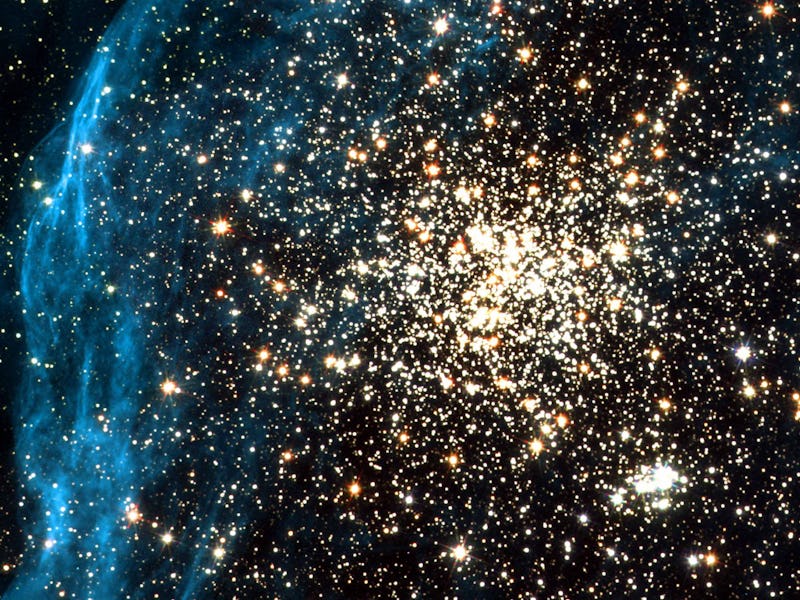Stars in the Milky Way's Core Are 10 Billion Years Old and a Bulge Is Not a Halo
The RR Lyrae star population could help us understand the origins of the galaxy.

A team of scientists revealed today that the center of the Milky Way holds a cluster of stars more than 10 billion years old. They’re so ancient that their orbits might be able to tell us more about the conditions present in the core of the galaxy when it was originally formed.
A team of scientists working from the Leibniz Institute for Astrophysics Potsdam in Germany and from the University of Southern California Los Angeles discovered the great age of the star population by comparing them to known RR Lyrae cluster stars. The stars in RR Lyrae pulse reliably once a day, and the team was able to use the pulses as an “age stamp” to extrapolate data about the center of the galaxy.
“We knew these stars were located in the galactic bulge,” lead researcher Dr. Andrea Kunder told Inverse by phone. “What we discovered was that these stars don’t rotate like the rest of the stars in the galactic bulge. We know from the dispersion in their velocities that they have to be older than the RR Lyrae stars we normally observe in the bulge; most of those are thought to be eight, nine, 10 billion years old.”
This newly distinguished star cluster at the center of the universe is more than 10 billion years old
According to AIP, the older the stellar formations in the Milky Way, the fewer heavy elements (metals) they’re expected to contain. Their orbits are also expected to adhere to a distinct elliptical shape. RR Lyrae stars, however, do not; their orbits are unexpectedly random.
The next step is to determine the precise metal content of these stars - that data will be the key to uncovering exactly how they were formed.
“Right now we have a basic knowledge of the iron content, but don’t have a detailed chemical fingerprint of the stars,” Kunder said. “So we can’t really compare if these stars are similar to the other bulge stars or if they’re similar to halo stars or disc stars, and how they’re different from other populations in the galaxy. If they’re enhanced in some particular element, that would indicate if they formed rapidly. Or if they’re depleted [of some elements], then they formed over a longer time period.”
Kunder and her team expected the stars they were observing to rotate in an elliptical manner similar to the other stars in the galactic bulge. The discovery that they do not, she says, may cause some to wonder whether the stars are truly a part of the bulge or part of a separate halo.
“This will help us understand if the bulge actually harbors two components, one that rotates that like a sphere and one that rotates [elliptically] like a football,” Kunder said. “Or if it really is just one component, rotating like a football, and this other component is a halo population. And if it is a halo, it would still help us understand the earliest epochs of the formation of the galaxy, because these are such old stars, they would have had to have formed before the “bar” in the bulge was in place … these little details help piece together exactly what our Milky Way galaxy is, give us a more complete picture of how it formed.”
RR Lyrae stars have been known to exist in the bulge since the early 1900s, and were the first stars used to determine the distance to the center of the galaxy.